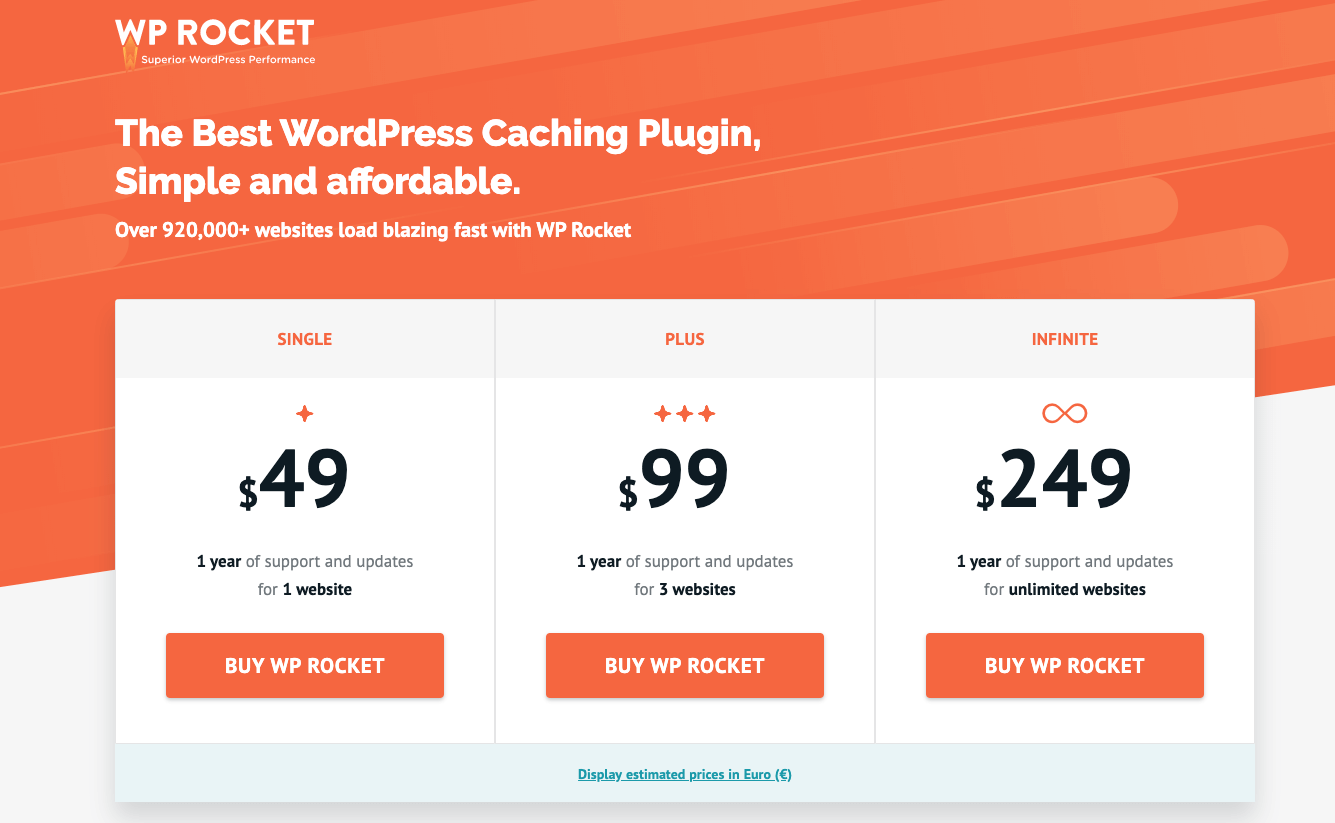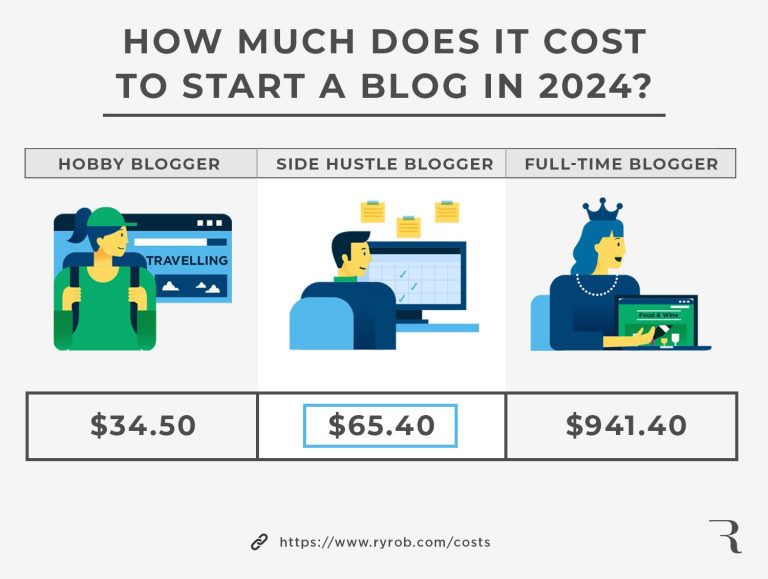Starting a blog or niche website can cost between $50 and $500 initially. Costs vary based on domain, hosting, and design.
Starting a blog or niche website is an exciting venture that offers numerous opportunities. The initial costs are relatively low, making it accessible for most people. A domain name usually costs around $10 to $15 per year, while basic hosting services range from $3 to $10 per month.
Investing in a premium theme or website design can add another $50 to $100. Additional expenses might include email marketing tools, plugins, and other resources to enhance your site’s functionality. Overall, with a budget of $50 to $500, you can launch a professional-looking blog or niche website that attracts visitors and generates income.

Credit: www.hostinger.com
Initial Planning
Starting a blog or niche website involves careful initial planning. This phase sets the stage for your success. You need to choose a niche and set clear goals. Let’s dive into these crucial steps.
Choosing A Niche
Choosing a niche is the first big step. Your niche should match your interests and expertise. It ensures you stay motivated and create quality content. Popular niches include:
- Health and Fitness
- Travel
- Personal Finance
- Technology
- Food and Recipes
Consider the following factors when choosing a niche:
- Passion: Are you passionate about this topic?
- Knowledge: Do you have expertise in this area?
- Audience: Is there a large audience interested?
- Competition: Can you compete with existing blogs?
Setting Goals
Setting goals helps keep your blog on track. Goals provide direction and motivation. Consider setting SMART goals:
- Specific: Clearly define what you want to achieve.
- Measurable: Ensure you can track your progress.
- Achievable: Set realistic goals within your reach.
- Relevant: Align goals with your overall vision.
- Time-bound: Set deadlines for your goals.
Here is an example of a table to track your goals:
| Goal | Deadline | Status |
|---|---|---|
| Write 10 blog posts | 30 Days | In Progress |
| Reach 1,000 visitors | 60 Days | Not Started |
Regularly review and adjust your goals. It ensures you stay on the right path.
Domain And Hosting
Starting a blog or niche website involves several costs. Two essential ones are domain and hosting. Both are crucial for your website’s online presence.
Selecting A Domain Name
Your domain name is your website’s address. It should be unique and easy to remember. A good domain name reflects your brand. It should be short, catchy, and relevant to your niche.
Here are some tips for selecting a great domain name:
- Keep it short and simple.
- Use keywords related to your niche.
- Avoid numbers and hyphens.
- Choose a .com extension if possible.
- Ensure it’s easy to spell and pronounce.
Once you have a few ideas, check their availability. Many domain registrars offer search tools for this.
Finding Affordable Hosting
Web hosting is where your website’s files are stored. It’s crucial for your site’s performance and uptime. There are different types of hosting plans available:
| Type | Features | Cost |
|---|---|---|
| Shared Hosting | Basic, good for beginners | $2.99 – $10/month |
| VPS Hosting | More resources, better performance | $20 – $50/month |
| Dedicated Hosting | Full server, high traffic sites | $80 – $200/month |
For beginners, shared hosting is the best option. It’s affordable and easy to set up. Many providers offer one-click WordPress installations. Look for providers with good reviews and reliable customer support.
Some popular hosting providers include:
- Bluehost
- HostGator
- SiteGround
Choose a plan that fits your budget and needs. Ensure it offers enough storage and bandwidth for your content.
Design And Theme
Design and Theme are crucial elements of any blog or niche website. The right design attracts visitors and keeps them engaged. A well-chosen theme can make your site look professional and trustworthy. Investing time and possibly money into your site’s design can pay off in the long run.
Free Vs. Paid Themes
Free themes are a great starting point. They offer basic customization and are budget-friendly. Many platforms like WordPress offer thousands of free themes. These themes are good for beginners who want to save money.
Paid themes, on the other hand, offer more features. They come with better support, frequent updates, and more customization options. A paid theme can cost between $30 to $100. This investment can make your site look unique and professional.
Consider the following table for a quick comparison:
| Feature | Free Themes | Paid Themes |
|---|---|---|
| Customization | Basic | Advanced |
| Support | Limited | Extensive |
| Updates | Occasional | Frequent |
| Cost | Free | $30 – $100 |
Customizing Your Site
Customization helps your site stand out. You can change colors, fonts, and layouts. Most themes come with a customization panel. This panel is easy to use and does not require coding skills.
Here are some common customization options:
- Colors: Match your brand colors.
- Fonts: Choose readable and attractive fonts.
- Layouts: Arrange elements like headers and footers.
- Widgets: Add useful features like search bars and social links.
Customizing your site can take time. But the effort makes your site more user-friendly. A good design improves user experience and keeps visitors coming back.

Credit: www.wix.com
Content Creation
Creating content is a major part of starting a blog or niche website. Quality content can attract more readers and improve your site’s rankings. Let’s dive into the details of content creation and see how to make it effective.
Writing Quality Content
Writing quality content is crucial for your blog’s success. High-quality content engages readers and builds trust. Here are some tips to help you write better content:
- Research your topic: Always gather enough information before writing.
- Use simple language: Write in a way that a 9-year-old can understand.
- Be clear and concise: Avoid fluff and unnecessary words.
- Include keywords: Use relevant keywords naturally in your content.
- Use headings and subheadings: They make your content easy to read.
Using Free Tools
Many free tools can help you create better content. These tools can improve your writing and make it more engaging:
| Tool | Purpose |
|---|---|
| Grammarly | Check grammar and spelling mistakes. |
| Hemingway Editor | Make your writing clear and easy to read. |
| Google Keyword Planner | Find relevant keywords for your content. |
| Canva | Create engaging images and graphics. |
Using these tools can save you time and improve your content. Start using them today to make your blog better!
Marketing And Growth
Launching a blog or niche website is just the beginning. The next step is growing your audience. Effective marketing strategies help you attract readers and keep them engaged. Below, explore some cost-effective methods for marketing and growth.
Social Media Strategies
Social media platforms are great for reaching new audiences. Start by creating profiles on Facebook, Twitter, and Instagram. Share your blog posts and engage with followers.
- Post Regularly: Consistency is key. Post at least once a day.
- Use Hashtags: Hashtags increase visibility. Use relevant tags for your niche.
- Engage With Followers: Respond to comments and messages. Build a community.
Collaborate with influencers. They can help you reach a broader audience. Offer to write guest posts for their blogs or have them review your content.
Seo On A Budget
Search Engine Optimization (SEO) is crucial for organic traffic. You don’t need a big budget to start. Use these tips to improve your SEO.
- Keyword Research: Use free tools like Google Keyword Planner. Find keywords relevant to your niche.
- Optimize Content: Place keywords in titles, headers, and meta descriptions. Write naturally.
- Internal Linking: Link to other posts within your blog. This helps search engines understand your content.
- Quality Backlinks: Reach out to other bloggers for backlinks. Guest posts are a good way to earn these.
SEO takes time. Be patient and consistent. Monitor your progress with free tools like Google Analytics.

Credit: www.ryrob.com
Frequently Asked Questions
How Long Does It Take To Make $100 Blogging?
Earnings from blogging can vary. It may take a few months to make $100 with consistent effort. Focus on quality content, SEO, and audience engagement to speed up the process.
Is It Expensive To Start A Blog?
Starting a blog can be inexpensive. Costs include domain registration, hosting, and optional themes or plugins. Free platforms exist.
Is It Better To Start A Website Or A Blog?
Starting a blog is ideal for sharing personal insights and building an audience. A website suits businesses needing a static online presence. Both have unique benefits, depending on your goals.
Is It Still Profitable To Start A Blog?
Yes, starting a blog can still be profitable. Focus on niche topics, quality content, and monetization strategies. Consistent effort is key.
How Much Does It Cost To Start A Blog?
Starting a blog can cost between $50 to $200 annually, depending on hosting and domain choices.
Conclusion
Starting a blog or niche website can be affordable and profitable. Initial costs depend on your choices and goals. With careful planning, you can manage expenses effectively. Remember to invest in quality hosting, design, and content. A well-planned budget will set you on the path to success in your blogging journey.


